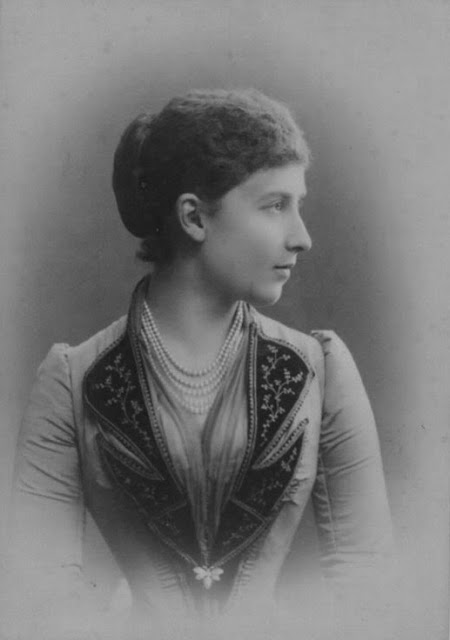Princess Charlotte of Prussia was the
eldest daughter and second child of Prince Frederick of Prussia and his wife,
Victoria, Princess Royal, the eldest child of Queen Victoria of Great Britain.
Born as Victoria Elizabeth Augusta Charlotte on July 24, 1860, she arrived into
the world at the Neues Palais in Potsdam in what was a rather easy labor for
her mother as compared to the previous birth of her older brother, Prince
Wilhelm. Wilhelm, who was nineteen months his sister’s senior, had been the
product of a distressing breech birth that left him with a withered left arm
due to Erb’s palsy and a damaged self-image. Through both of her parents, Charlotte was descended from noble and
powerful European linages. Her father was a member of the House of
Hohenzollern, a royal family that had ruled Prussia since 1701. Her mother was
the oldest child of Queen Victoria and her husband, Albert, Prince Consort, and
was the ruler of a vast empire extending from the shores of England to the
sands of India. By the time Charlotte was a year old, her father’s social
standing increased further when he became the Crown Prince of Prussia after his
father, King Wilhelm I’s, accession to the throne. Charlotte’s mother would
give birth six more times after Charlotte’s birth until her last delivery in
1872. The eight children of Frederick and Victoria consisted of four daughters
and four sons, however, two of their sons, Prince Sigismund and Prince
Waldemar, died at a young age. Sigismund died twenty-one months after his birth
in 1864 of meningitis while Waldemar died in 1879 at the age of eleven from
diphtheria.
 |
| Princess Victoria, her husband Prince Frederick, and their two eldest children, Prince Wilhelm and Princess Charlotte (Franz Xaver Winterhalter, 1862) |
 |
| A young Princess Charlotte (1873) |
 |
| Princess Charlotte and Prince Bernhard of Saxe-Meiningen (1876) |
 |
| Princess Charlotte and a young Princess Feodora (1879-80) |
 |
| Princess Charlotte (mid 1890's) |
 |
| Princess Charlotte (Philip de László, 1890's) |
 |
| Princess Charlotte and her husband, Prince Bernhard of Saxe-Meininge |
 |
| Princess Feodora of Saxe-Meininge (1900) |

Do you know of any books about her?
ReplyDelete